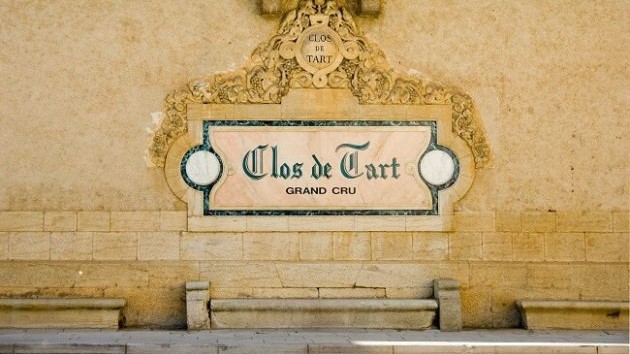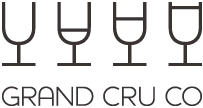Clos de Tart sold to Latour owner Pinault
Château Latour owner Francois Pinault has acquired renowned Burgundy winery Clos de Tart via his family-held investment company for an undisclosed fee.
François Pinault and his family announced on Friday (27 October) that they have bought Clos de Tart, the renowned domaine of Morey St-Denis in Burgundy’s Côtes de Nuits, via their holding company Artémis.
No fee was disclosed, although Burgundy grand cru vineyards are the most expensive in the world, costing several million euros per hectare. Clos de Tart has 7.53 hectares. Some reports in France suggested that the purchased price was possibly as high as 250 million euros, but this could not be verified. It marks the latest in a string of high profile winery sales this year.
There has been speculation over Clos de Tart’s future for several weeks. At least one other high profile bidder showed significant interest, but decided not to pursue a deal.
Clos de Tart was created in 1141 by a group of nuns, les Bernardines de Tart, a branch of the nearby Cistercian congregation. It was requisitioned after the French Revolution and sold at auction in 1791 to Charles Dumand and the Marey-Monge family.
More recently it was owned by Maison Champy and Chauvenet in Nuits-Saint-Georges, until the Mommessin family bought Clos de Tart in 1932 and has owned the estate until now.
From 1996, under the impetus of estate director Sylvain Pitiot, Clos de Tart is widely acknowledged to have seen a strong return to form and is again among the most prized wines of Burgundy.
Clos de Tart is the largest monopole vineyard classified as Burgundy grand cru and has never been broken up. The vineyard is largely defined by very stony soils, resting on calcareous subsoils and with clay near the surface.
Through Artémis, Pinault also owns first growth Château Latour in Bordeaux, Eisele Vineyard Estate in Napa Valley – previously named Araujo – plus Domaine Eugénie in Burgundy and Château Grillet in Northern Rhône. With this purchase, François Pinault becomes the neighbour of his rival, Bernard Arnault, owner of LVMH, which bought Clos des Lambrays in Burgundy in 2014.
Zero emissions winery possible in 15 years, says Torres
Spanish winemaker Miguel Torres Snr has said that wineries must aim to be carbon neutral and that he is looking at ways to re-use carbon dioxide from fermentation as part of a project that involves investing more than 10% of company profits annually. John Stimpfig reports from Penedes.
Miguel Torres Snr, president of Bodegas Torres and with operations across Spain, US and Chile, was speaking at a Torres & Earth presentation in Penedes, Catalonia, this month to showcase new and emerging technologies that could help wineries mitigate the effects of climate change.
‘In 10-15 years, I think it is perfectly possible we will see wineries which are carbon neutral with zero carbon emissions,’ he said.
Torres has become known as a passionate advocate of environmental protection after he saw Al Gore’s film ‘An Inconvenient Truth’ in 2007.
‘I came out of the film and said to my wife, “we have to do something about global warming for the sake of our vineyards”,’ he said.
Several studies suggest that climate change poses stark risks for vineyards, which may be exposed to more extreme weather and see traditional grape varieties struggle to achieve balance in altered conditions.
Many scientists believe that it is close to inevitable that global temperatures will rise by two degrees this century, without rapid intervention from the world’s biggest polluters.
Bodegas Torres has said it is focused on developing technologies to capture and reuse carbon dioxide.
‘Climate change has not gone away, but nobody is really talking about it,’ Torres Snr told the media. ‘Moreover, it remains the biggest challenge facing the wine industry in general and vine-growing in particular. Increasing temperatures mean that the grape harvest is earlier every year, which could come to affect the quality of wines and even alter the vine growing map.’
Torres has committed to reducing carbon emissions, from vine to final destination, by 30% versus 2008 levels by 2020; one of several sustainability initiatives now up-and-running across the wine world.
To achieve that, Torres said that its family business has consistently set aside 11% of its annual profits for environmental projects. This year, the total investment in the programme will exceed 12m euros.
It now has a biomass boiler in Penedes, cutting 1,300 tonnes of CO2 per annum. Solar and photovoltaic installations have also enabled the Penedes winery to generate 25% of its own electricity needs.
Other eco efficiency measures include optimising water resources, reducing average bottle weight, insulating vats and transportation. This year it created the Torres & Earth Supplier Awards to encourage its suppliers in the same direction.
How has it done? In 2016, Bodegas Torres had reduced its own CO2 emissions by 40% compared to 2008. When suppliers and partners are included, the figure was 18.9% at the end of June 2017; meaning there is more to be done to hit the 30% overall reduction target.
Torres Snr said the company was already looking at the possibility of becoming carbon neutral. He is interested in the complex area of carbon capture, storage and potential reuse – turning CO2 back into energy.
Each year, Torres produces 3,000 tonnes of CO2 by fermenting grapes.
‘The idea is to capture CO2 from fermentation and then transform it into a source of energy which could be used to reduce cost or sold to generate income,’ Torres Snr said. His said his team has been working in Penedes with universities and commercial companies on ways to achieve this. He added that Torres will make its research results available to other wineries.
‘All they need to do is register an interest. Already, 25 Spanish wineries have done so.’ But, he said that he would also like to see more environmental support from the Spanish government. ‘I have been frustrated by the overall progress in sustainability in our industry to date. When we set up Wineries for Climate Change in Spain, three years ago, the response was disappointing.
‘But now I think people are prepared and ready to invest. It is helped by the fact that the cost of renewables has come down, which is a positive trend. But also attitudes and the technology are changing fast.
‘In 10-15 years you will see a big difference. We will have carbon neutral wineries with no emissions. I promise you this is not a pipe dream. We will make it happen.’
Loire 2017 harvest shows mixed fortunes after frost
There has been a stark contrast in fortunes across the Loire in 2017, with spring frost hitting some areas much harder than others, but an early crop means that quality is looking good overall, reports Jim Budd.
Loire 2017 is an early vintage of promising to very promising quality but volumes are very variable due to the uneven damage caused by the late April frosts.
According to estimates published in July by the French Ministry of Agriculture the Loire is predicted to up by 7% at 2,3 millions hl on 2016. However, but this is still a small vintage as the frost and mildew affected 2016 vintage was 25% below average.
Picking started picking at the end of August, especially for Crémant. 30th August was the official start for the Muscadet harvest, the eighth earliest start in recent years. However, heat wave 2003 was 11 days earlier – 19th August.
Much of the Loire harvest was over by mid-October.
Tasting the 2017 grape juice from Muscadet through to Pouilly-sur-Loire all of them appeared to be very clean, precise with ripe fruit and well balanced. Although it is difficult to know clearly at this stage how the finished wines will turn out, the quality of the 2017 looks to be good. Certainly many of the grapes were very clean with little rot.
While quality appears to be good through out the Loire volumes made are very variable.
Following an early bud-break there were a series of frosts in the last two weeks of April. The effects on the harvest have been very variable.
Parts of Muscadet were very badly affected – Fred Niger in Le Landreau made only three hectolitres per hectare. Nearby Domaine Pierre Luneau Papin, Bonnet-Huteau (La Chapelle-Heulin) and Vincent Caillé (Monnières) were also severely hit. In contrast Jérémie Hutchet (Château-Thebaud) was barely affected.
In the Fiefs Vendéens Thierry Michot’s white varieties were greatly reduced by frost, while his reds are very good.
Much of Savennières made very little wine, except for the eastern part. In contrast much of Bourgueil and Saint Nicolas de Bourgueil had a plentiful harvest – a relief after being severely frosted in 2016.
In the Central Vineayrds Mentou-Salon had a generous harvest after making virtually nothing 2016. Parts of Pouilly-Fumé are well down, while the Coteaux de Giennois has made more than initially feared. Volume in Sancerre may be a little down but here again the quality should be high.




